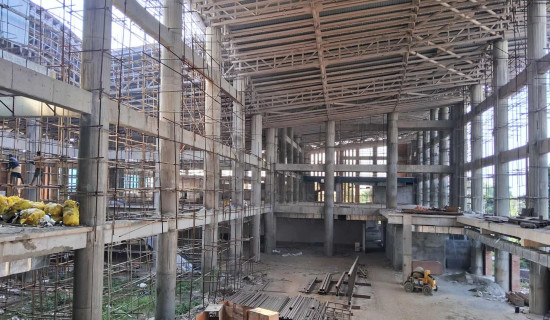- Thursday, 20 November 2025
Enforce Air Safety Rules
In yet another sad news, a chopper crashed near Kathmandu, killing all five on board. A pilot and four Chinese nationals were killed in the private helicopter accident in Shivapuri Rural Municipality-7 in Nuwakot district on Wednesday afternoon. The chopper lost its contact with the Tribhuvan International Airport (TIA) tower within three minutes of its take-off. This crash comes less than two weeks after a Saurya Airlines plane crashed in the TIA premises, killing 18 of 19 on board. There had also been major crashes preceding this in quick succession.
The frequency at which air crashes are happening in Nepali skies is really troubling, putting our entire aviation sector to shame. Air travel is miraculously safe, but these recurring incidents of crashes have forced many to wonder why that's not the case in Nepal. The country has long been criticised for its poor air safety record, explaining why many foreign tourists have entirely foregone travelling by airplane or helicopter here. For some others who have no option but to travel this way, it has become a nightmare. The latest crash has reignited debates surrounding national air safety. Mountain connectivity by air constitutes one of the pillars of our tourism industry and the major source of foreign currency earning, but such mishaps has jeopardised it.
Nepal's airlines have been on the European Union's air safety blacklist since 2013 because of significant aviation security concerns, deterring many tourists from visiting the country. Two aviation-related bills calling for a split in CAAN’s duties and a restructuring of the national aviation sector have been pending in the parliament since 2020. If failing to pass the bills is contributing to making the sector unsafe, concrete measures must be taken to quickly pass them. The dire situation also begs a question of why there hasn't been a remarkable progress in air safety even though a probe commission is formed to investigate and make suggestions in the wake of every crash.
Almost every time human error is held responsible for air crashes. The Civil Aviation Authority of Nepal (CAAN), the governing body which oversees the entire process of granting licences, as well as training and hiring pilots by airline operators, is equally responsible for ensuring air safety. Global aviation watchdogs have repeatedly questioned the body’s dual role and asked Nepal to break the organisation into two entities – service provider and regulator – to ensure safety. Despite this, why the warning continues to fall on deaf ears is very concerning. As things stand, a complete overhaul in how our aviation sector is regulated seems to be the only way forward.
Experts have time and again voiced the concern that, in our case, poor maintenance of airplanes is to blame for most of the mishaps. A 20-30 year-old plane, they say, is not old enough to be grounded if its software and hardware are updated as needed. What is the real problem, however, is delaying this maintenance, they claim. And in a country with lax regulatory system as ours, this can be a recipe for disaster. Also, with the growth of private airlines, stringent regulation must be put in place to ensure profit never takes precedence to safety. Air safety has become a matter of serious concern here. Dillydallying about making critical changes to regulatory body has already cost many lives as well as tourism sector dearly. To turn the tide on this serious situation, the government mustn't hesitate to take drastic steps even if it means angering some segments of the bureaucracy.

















